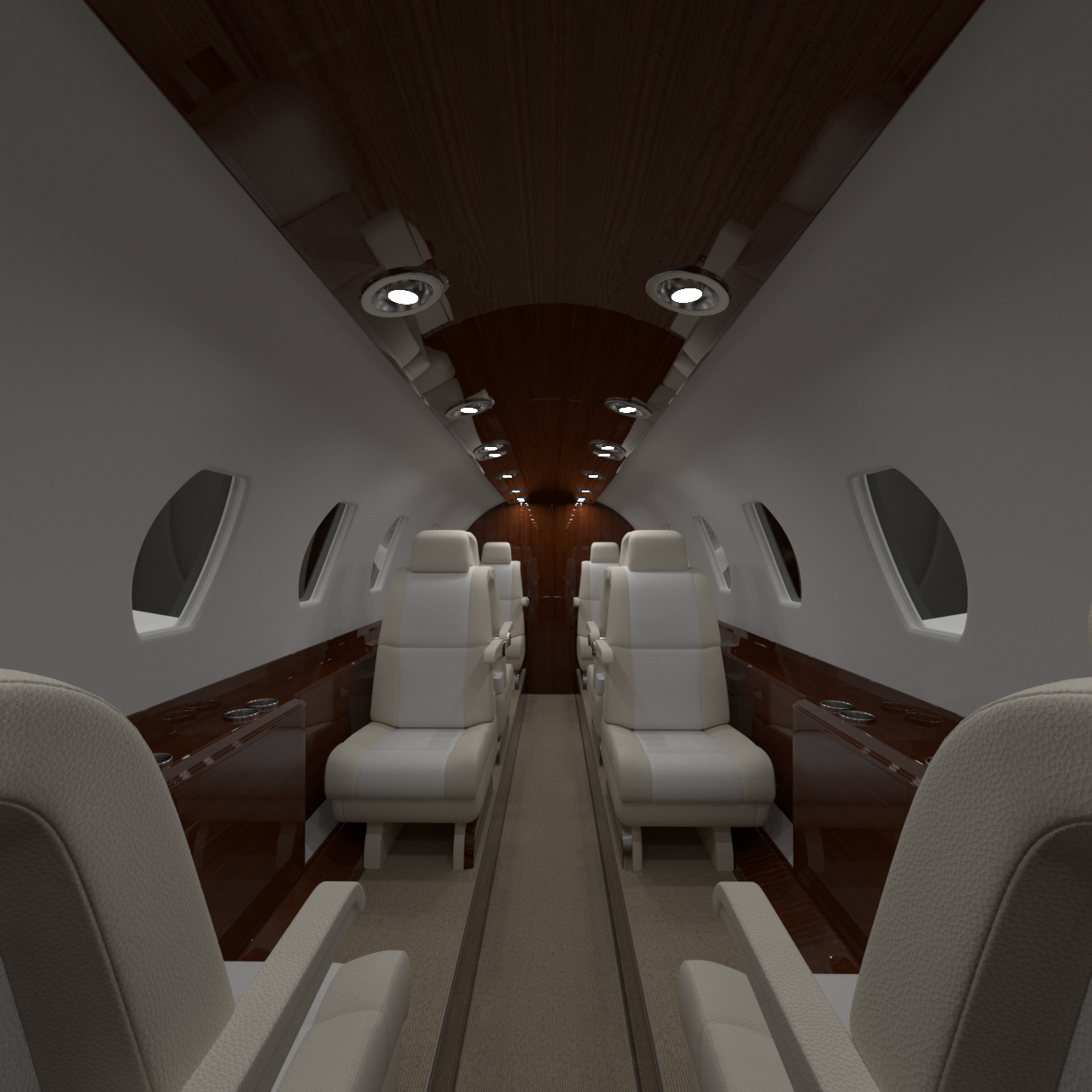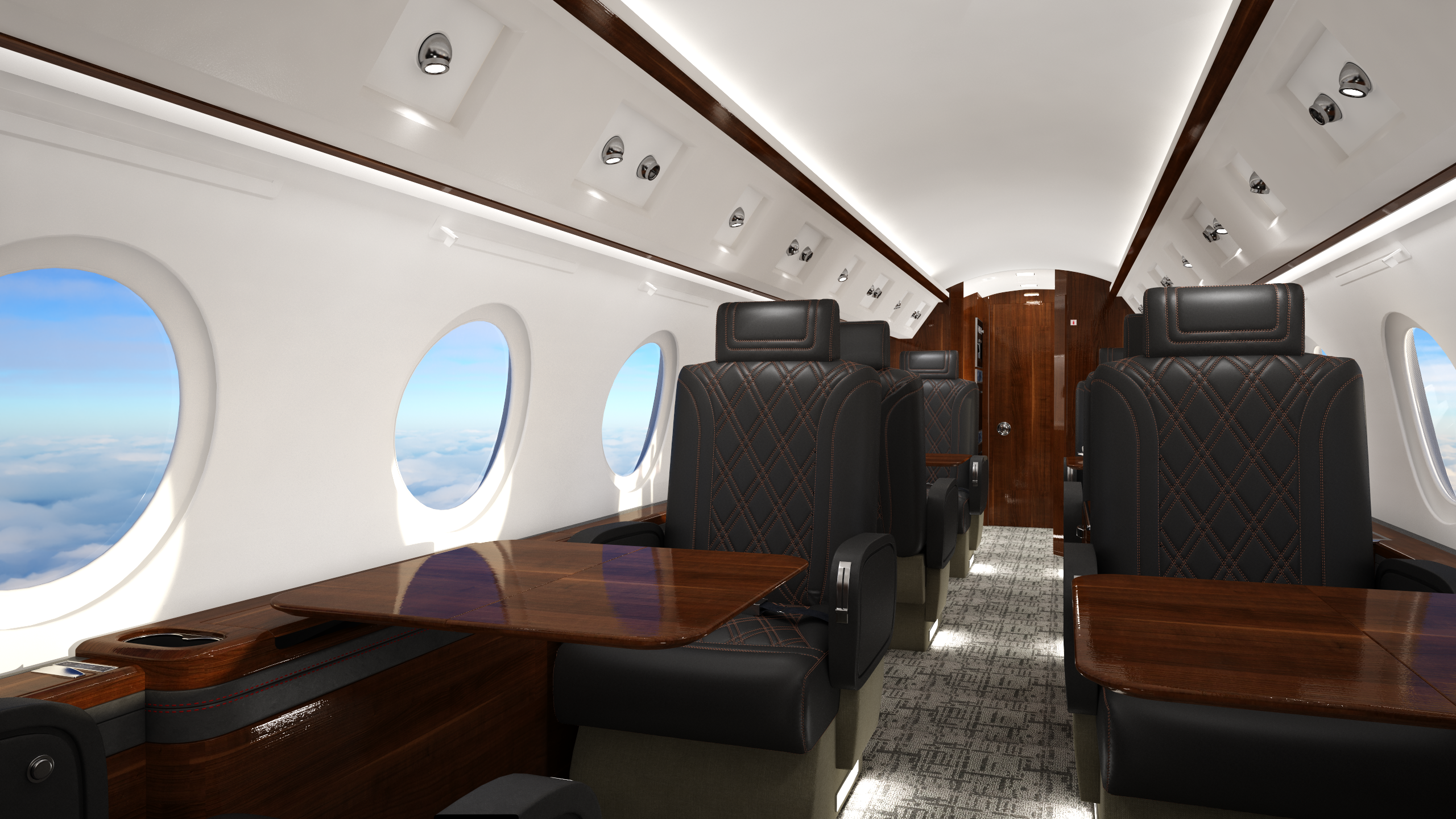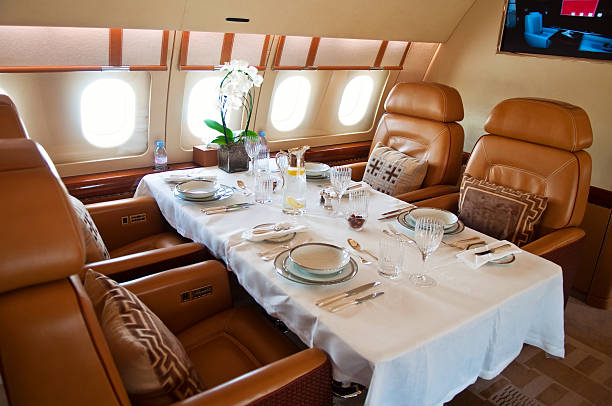In the competitive aviation industry, aircraft cabin interior design plays a pivotal role in shaping passenger experiences. The design of an aircraft cabin is more than just aesthetics; it involves creating a functional, comfortable, and visually appealing environment that meets the diverse needs of passengers. This comprehensive guide delves into the intricacies of aircraft cabin interior design, highlighting key elements and strategies to create a space that elevates the in-flight experience.

The Core Elements of Aircraft Cabin Interior Design
Designing the interior of an aircraft cabin involves a harmonious blend of functionality, comfort, and aesthetics. Here are the core elements that define superior aircraft cabin interior design:
1. Ergonomics and Comfort
Ergonomics is at the forefront of aircraft cabin interior design. Given the confined space and the extended periods passengers spend seated, ergonomic design is crucial for ensuring comfort. Seats should be designed to provide optimal support, with features like adjustable headrests, lumbar support, and ample legroom. The layout of the cabin should facilitate easy movement, ensuring passengers can access their seats and the aisle with minimal disruption.
2. High-Quality Materials
The choice of materials significantly impacts the overall feel and longevity of the cabin interior. Durable and high-quality materials such as leather, high-grade fabrics, and lightweight composite materials are essential. These materials not only enhance the aesthetic appeal but also withstand the rigors of frequent use, ensuring the cabin maintains its luxurious feel over time.
3. Advanced Technology Integration
Modern aircraft cabins are equipped with state-of-the-art technology to enhance passenger convenience and entertainment. In-flight entertainment systems with high-definition screens, connectivity options, and individual control panels for lighting and temperature are standard features. Integrating advanced technology seamlessly into the cabin design ensures a comfortable and enjoyable flight experience for passengers.
Crafting Aesthetic Appeal
A visually appealing cabin contributes significantly to passenger satisfaction. Here’s how to craft an aesthetic yet functional aircraft cabin:
1. Thoughtful Aircraft Color Schemes
Aircraft color schemes play a vital role in setting the tone and mood of the cabin. Neutral tones like beige, grey, and white are often used as base colors due to their calming effect and ability to make the space feel more open and airy. These can be complemented with accent colors such as blues, greens, or warm hues to add character and vibrancy. Thoughtful use of color not only enhances the aesthetic appeal but also influences passenger mood and comfort.
2. Strategic Lighting Design
Lighting is a crucial aspect of aircraft cabin interior design. A combination of ambient, task, and accent lighting can create a welcoming and adaptable environment. LED lighting systems are preferred for their energy efficiency and flexibility. They can be adjusted in terms of color and intensity to suit different phases of the flight, such as boarding, dining, or sleeping. Proper lighting design enhances the visual appeal and contributes to passenger well-being by reducing fatigue and stress.
3. Elegant Finishing Touches
Attention to detail in finishing touches can elevate the cabin’s aesthetic appeal. This includes elements like stitching patterns on seats, the choice of hardware finishes, and decorative trims. These subtle details can make a significant difference in creating a luxurious and cohesive look. Personalization options, such as custom logos or monograms, can also be added to reflect the airline’s brand identity and provide a unique touch.
Enhancing Functionality and Efficiency
An efficient cabin layout ensures smooth operations and enhances the overall passenger experience. Here’s how to achieve functionality without compromising on luxury:
1. Optimal Space Utilization
Efficient use of space is critical in aircraft cabin interior design. The layout should maximize passenger capacity while ensuring comfort. This involves strategic placement of seats, galleys, and lavatories to optimize space and facilitate easy movement. Innovative solutions like slimline seats and foldable tables can help in utilizing space effectively.
2. Ample Storage Solutions
Adequate storage is essential for maintaining a clutter-free cabin. Overhead bins should be spacious and easily accessible, providing enough room for carry-on luggage. Under-seat storage options can also be incorporated to offer additional space for personal items. Ensuring that passengers have sufficient storage helps in keeping the cabin tidy and organized, contributing to a more pleasant environment.
3. Efficient Layout Design
The layout of the cabin should be designed to enhance operational efficiency. This includes thoughtful placement of service areas like galleys and lavatories to ensure quick and unobtrusive service. The design should facilitate smooth boarding and deplaning processes, reducing turnaround times and improving overall efficiency.

Ensuring Safety and Compliance
Safety is paramount in aircraft cabin interior design. Ensuring that all materials and components meet stringent aviation safety standards is essential. Here’s how to balance safety with aesthetics:
1. Compliance with Safety Standards
All materials used in the cabin, from upholstery to flooring, must comply with aviation safety regulations. This includes using fire-resistant materials and ensuring that all fixtures are securely fastened. Collaborating with certified aviation interior specialists ensures that the design meets all safety requirements without compromising on aesthetics.
2. Emergency Preparedness
The design should incorporate clear and accessible emergency equipment and exits. This includes proper signage, easily accessible emergency exits, and strategically placed life vests and oxygen masks. Ensuring that these elements are integrated seamlessly into the design without obstructing the cabin’s aesthetic is crucial for both safety and passenger comfort.
3. Regular Maintenance and Upgrades
Regular maintenance and timely upgrades are essential for keeping the cabin safe and up-to-date. Implementing a maintenance schedule that includes inspections and repairs ensures that all components remain in optimal condition. Upgrading technology and materials periodically can also enhance safety and passenger experience, keeping the cabin fresh and modern.
Creating a Memorable Passenger Experience
Ultimately, the goal of aircraft cabin interior design is to create a memorable and enjoyable experience for passengers. Here’s how to achieve this:
1. Personalization and Customization
Offering personalization options, such as customized seat settings, lighting preferences, and individual entertainment choices, can significantly enhance passenger satisfaction. Tailoring the in-flight experience to individual preferences makes passengers feel valued and cared for, contributing to a positive overall experience.
2. Superior Customer Service
A well-designed cabin, combined with exceptional customer service, can create a lasting impression. Training cabin crew to provide attentive and personalized service enhances the passenger experience. Ensuring that the design facilitates efficient service delivery, such as easy access to galley areas and service carts, supports this goal.
3. Continuous Feedback and Improvement
Gathering feedback from passengers and continuously improving the cabin design based on their inputs is essential for staying ahead in the competitive aviation industry. Regularly updating the design to incorporate the latest trends and technologies ensures that the cabin remains modern and appealing.

Conclusion
Aircraft cabin interior design is a complex and multifaceted process that combines aesthetics, functionality, and safety to create an exceptional passenger experience. By focusing on ergonomics and comfort, high-quality materials, advanced technology integration, thoughtful aircraft color schemes, strategic lighting, optimal space utilization, safety compliance, and personalized service, airlines can transform their cabins into luxurious and efficient spaces. Each element plays a crucial role in crafting an environment that not only meets but exceeds passenger expectations, making every flight a memorable journey.

